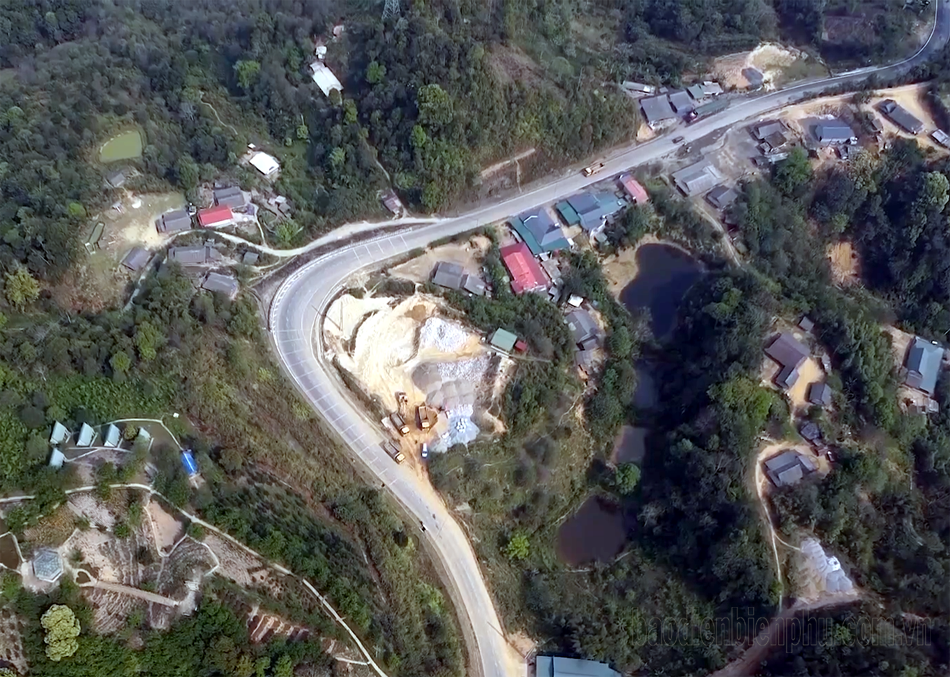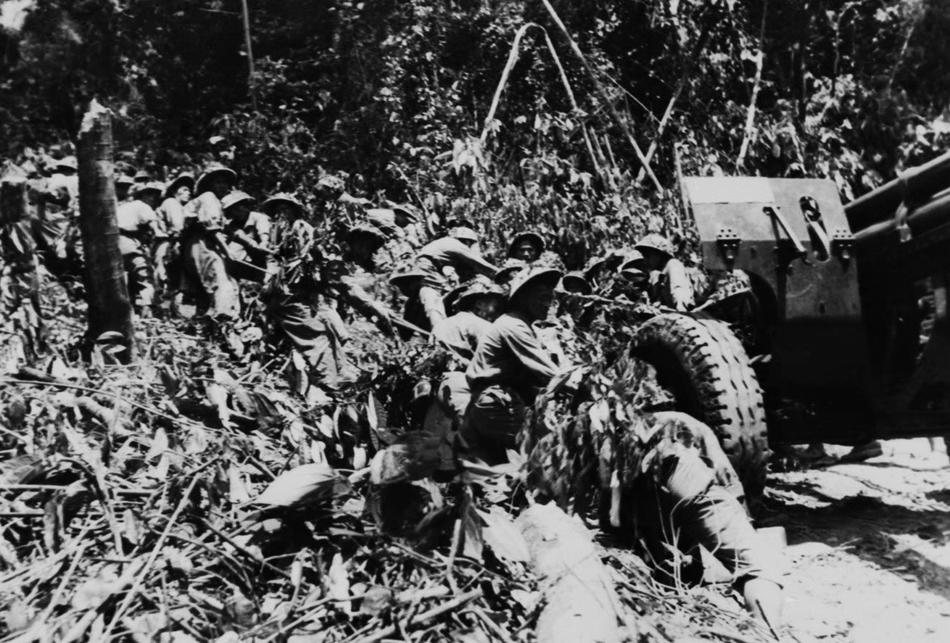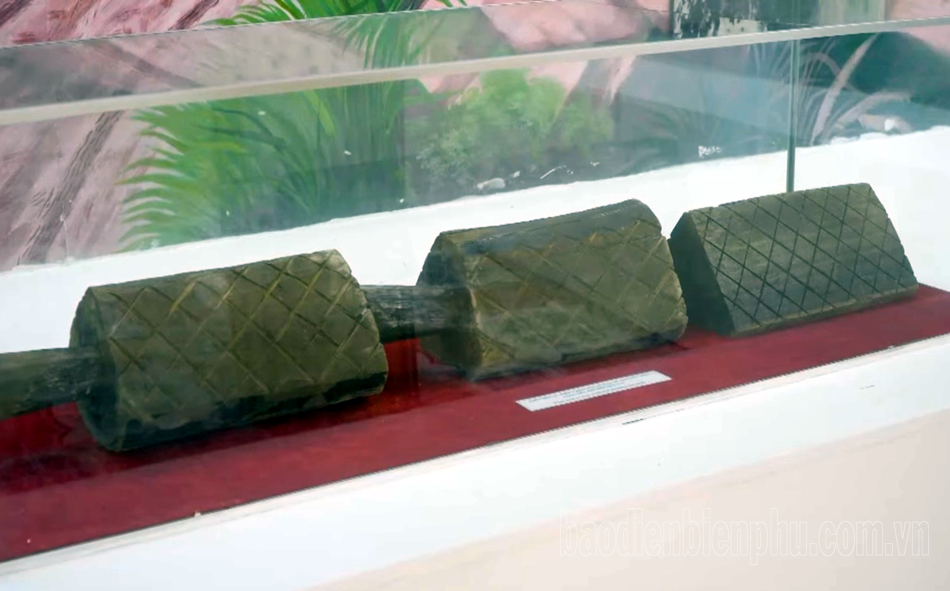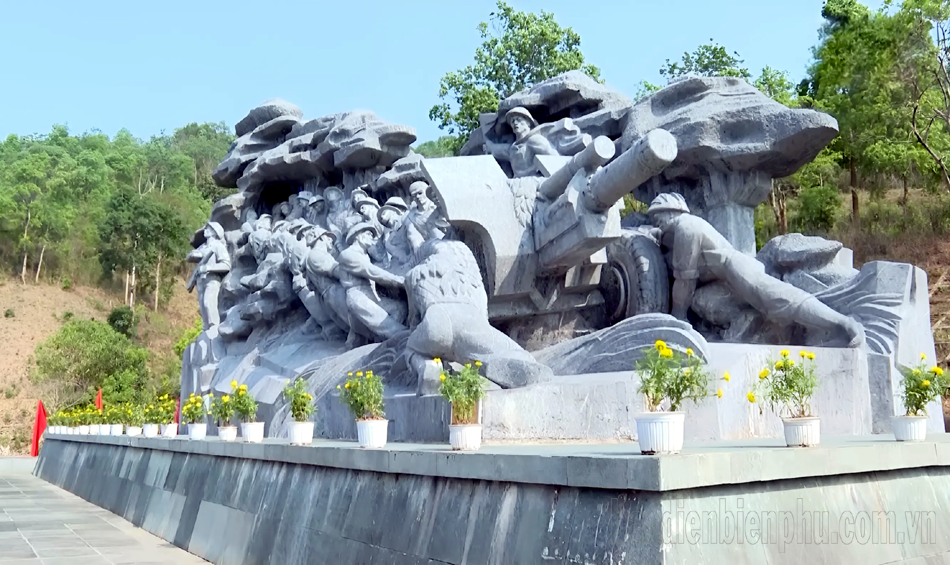
Pha Đin Pass, the starting point of the cannon-pulling journey into the battlefield.
"The mountain is formidable, but our strength is more formidable. The ravine is deep, but our anger and resentment are deeper."
The poignant song 'Hò kéo pháo' (Heave Away The Cannon), composed by Hoàng Vân, vividly depicts the hardships and unwavering determination of Vietnamese soldiers during the Điện Biên Phủ Campaign 70 years ago.
The historic cannon-pulling route has since become legendary. Over seven decades ago, Pha Đin Pass in the northern province of Điện Biên served as a crucial supply route for transporting weapons, ammunition, and provisions for the Vietnamese infantry and artillery during the campaign.
Previously spanning 32 kilometers as part of National Highway No. 6, this pass acted as the gateway to Điện Biên Province. With its highest point reaching 1,648 meters above sea level, one side of the pass features sheer cliffs while the other side plunges into a deep abyss. The pass boasts gradients of up to 10 percent, reaching a daunting 19 percent at certain points.
The road along the pass, characterised by steep inclines and declines, is treacherous, featuring curves with radii of less than 15 meters and countless hairpin bends. Despite these challenges, Vietnamese soldiers persevered in transporting weapons and provisions to the Điện Biên Phủ battlefield via this perilous pass, despite relentless air raids by the French air force aimed at impeding their progress. Yet, these adversities failed to dampen the resolve and fortitude of the Vietnamese soldiers in their mission to move cannons into the campaign.

Điện Biên soldier Lê Hữu Thảo shares with reporters the hardships and challenges on Pha Đin Pass.
Lê Hữu Thảo, a 93-year-old Điện Biên soldier from Thiệu Giao Commune, Thiệu Hóa District, Thanh Hóa Province, vividly recalls the intense bombing endured by Pha Din Pass, a crucial point heavily targeted by the French army in their attempts to sever our supply lines of food and weapons.
Every day, French planes relentlessly bombed the pass area, dropping hundreds of various bombs in their efforts to obliterate this vital supply route. Nowadays, Pha Din Pass has been lowered and widened, losing some of its former intimidation factor. However, it remains a legendary route where Điện Biên soldiers once pulled cannons with sheer human strength.
Among the routes used for pulling cannons, one stands out as particularly special: a 15-kilometer stretch from the Nà Nham forest gate over Pha Sông mountain peak down to the Tấu and Nghễu communes, now part of Nà Nhạn Commune in Điện Biên Phủ City. Remarkably, this stretch of road was constructed in just 20 hours by 5,000 officers and soldiers.
On this challenging route, heavy cannons weighing over two tonnes each were carried to the summit of Pha Sông, which stood at 1,500 meters high. Guided only by the faint light of the stars, soldiers navigated the perilous path, with one side bordered by a steep cliff and the other by a deep, gaping abyss.

Vietnamese troops pulling cannons into Điện Biên Phủ. File photo
After nearly ten days and nights of relentless effort, our army's cannons were successfully brought into the battlefield, closing in on the enemy's positions. However, upon assessing the enemy's situation, the Điện Biên Phủ Front Command made the strategic decision to shift from the approach of "strike quickly, win quickly" to "strike firmly, win firmly".
Consequently, our troops had to undertake the arduous task of pulling the cannons out once again. While pulling the cannons in was challenging, extracting them proved to be even more daunting. The process of maneuvering the cannons downhill demanded utmost caution, especially considering each cannon weighed over two tonnes. Any mishap, such as a snapped rope, could result in the cannon plummeting into the abyss below.
During one such incident when the cannon rope gave way, a young soldier named Tô Vĩnh Diện courageously leaped into action, using his own body to block the sliding cannon and prevent disaster. His selfless act has been immortalised in history as a legend, symbolising the indomitable spirit of the Điện Biên soldiers. Inspired by soldier Tô Vĩnh Diện's heroic sacrifice, the entire front rallied together to ensure the safe extraction of the cannons.

A panorama painting of Vietnamese troops pulling cannons into the Điện Biên Phủ battlefield at the Điện Biên Phủ Historical Victory Museum.
Điện Biên soldier Phạm Đức Cư, hailing from Nam Thanh Ward in Điện Biên Phủ City, vividly recounted the grueling final stretch of the cannon-pulling journey.
"Our march was incredibly tough. When we reached Điện Biên, approximately 15km from the Điện Biên Phủ base group, we had to manually pull the cannons. That was the most challenging part of our military service. We will never forget the sections of the road at the Bảy Tời, Ông Mậu, Suối Ngựa, and Voi Phục slopes, as well as the heroic sacrifice of Hero Tô Vĩnh Diện," he said.
Despite facing countless obstacles and enduring hardships, the 75mm cannons, 120mm howitzers, and 105mm cannons all simultaneously unleashed rounds into the Him Lam resistance center, signaling the commencement of the Điện Biên Phủ Campaign at 5 pm on March 13, 1954. The French army had never anticipated that the Việt Minh forces could maneuver the cannons so close to the battlefield. This unexpected development significantly contributed to the victory of Điện Biên Phủ.

The triangular wooden wedges used by Vietnamese soldiers to prop up cannons in the past.
In recent days, the entire nation is gearing up to commemorate the 70th anniversary of the Điện Biên Phủ Victory. During a trip to Điện Biên Phủ City, Nguyễn Văn Toàn, a tourist from Đà Nẵng City, shared: “Having the opportunity to visit the land of Điện Biên, to explore its historical relics, I am deeply moved, proud, and grateful to the previous generations who fought for the independence and freedom of the nation. Especially, visiting the cannon-pulling monument, I am deeply impressed by our ancestors, who, with their humble strength, pulled tonnes of cannons across countless high passes and deep ravines to reach the battlefield safely."

The cannon hauling monument in Nà Nhạn Commune in Điện Biên Phủ City.
The echoes of war have faded into history. Today, the route once traversed by brave soldiers to haul cannons to Điện Biên starts from the majestic Pha Din Pass and culminates at the memorial site of Hero Tô Vĩnh Diện, who sacrificed himself to secure the cannons. Situated approximately 20km north of Điện Biên Phủ City, a complex of statues now graces the Bó Hom Hill, paying tribute to the heroic artillery unit led by Hero Tô Vĩnh Diện. This monument serves as a testament to the legendary cannon-hauling route of the past, inspiring future generations.
To enrich the experience of visitors eager to delve into history, a museum showcasing artifacts utilised by Vietnamese soldiers during the cannon-hauling efforts 70 years ago stands adjacent to the cannon hauling monument.




.jpg)

.jpg)

.jpg)
.jpg)
.jpg)
.jpg)
.jpg)

.jpg)
.jpg)


.jpg)

.jpg)
You have 500/500 characters left
Please enter 5 or more characters!!!